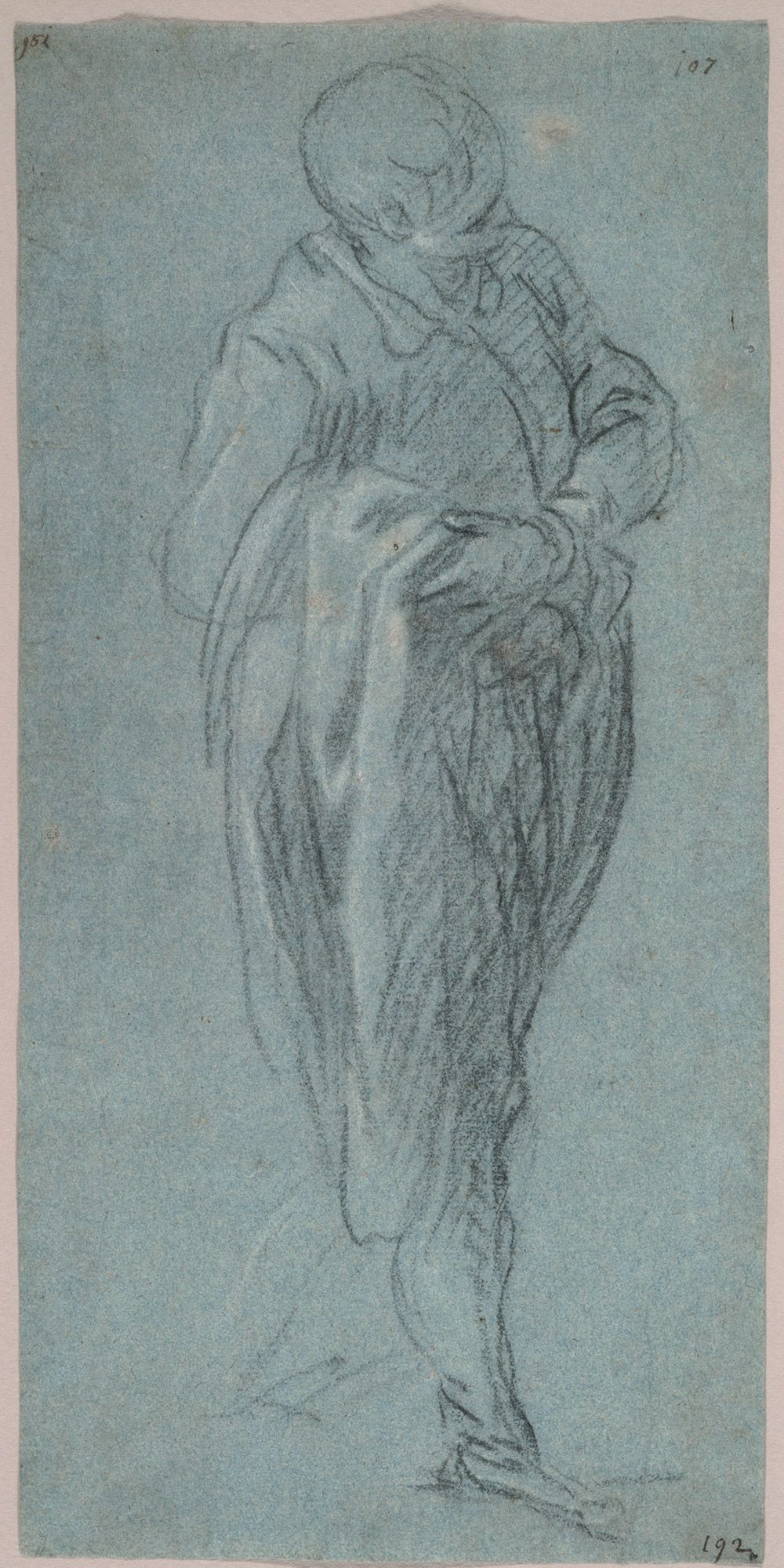FJK 089
Palma Jacopo The Younger (Italian, Venice ca. 1548–1628 Venice)
Standing Young Boy with Arms Crossed
ca. 1590-1591
10 5/8 × 5 15/64 in. (270 × 133 mm)
Medium
Black chalk heightened with white chalk on bluish paper
Anonymous 17th-century inscriptions in pen and brown ink, upper right 107(?); upper left 152 (?); bottom right: 192
Origin
Private Collection
Sale, Sotheby’s Olympia, London, December 13, 2001, no. 18
Jan Krugier Collection, Monaco, JK 5990
Jan Krugier Foundation
Notes
This casual but freshly improvisational sketch after a studio model is entirely characteristic of Palma il Giovane at his full maturity and before signs of routine creative leathergy had vitiated his productivity. Morethan was the case with most Venetian draftsmen of the later Cinquecento, Palma sketched compulsively, preserving a vast repertory of folios that served as a repertory of motives that might be consulted at a later date. The appearance of a given figure in a picture does not, therefore, necessarily indicate the period in which the drawing was made. In the present instance, however, the style of the sketch suggests that it might have been done as a direct preparation for figure at the extreme left in the background of the Entombment of the Christ (Venice, Oratorio dei Crociferi. See S. Mason, Palma il Giovane, Milan, 1984, no. 526, p. 139). Although only the upper part of the young man in the painting is visible, it was standard practice to sketch the full figure from the model so as to establish an organic sense of movement and gesture. The short-hand indications of eyes, nose, and mouth as well as the shadow on the cheek all appear with similar abbreviation in the painting. We would, therefore suggest that the [Jan Krugier Foundation] sketch was part of whatmust have been asizable comlex of pen and chalk studies drawn toward the beginning of the project. Although we do not know the exact date on which Palma was commissioned to paint the Crociferi Entombment of Christ, the records in the State Archive of the Oratorio dei Crociferi, Palma's largest and finest cycle of mural decorations, record that it was completed and installed in its present position on 12 December 1590. It should be noted, however, that sometime between 1590 and 1592 Palma returned to this sketch, using its upper part for the youth in the foreground gondola in the painting The Reception of King Henri III into Venice (Dresden, Gemäldegalerie), and adapting the arms and hands for the older man just in front and to the right of him. Although this occured often with Palma, in this instance the firmly established priority of the Crociferi picture confirm the drawing's date as 1590 or just before that date.
Palma used a wider range of media than any other Venetian draftsman of the Cinquecento, and sketches in pure pen, in pen and bistre wash, in red chalk, or even a Zuccaroid trois crayons survive by the hundreds. Studies in the classic Venetian mode of black chalk heightened with white chalk on blue paper are, surprisingly, rather rarer. The abbreviated spontaneity of the present study is much like that of the sketch of an apostle (Bergamo, Accademia Carrara, no. 399) that prepared the Christ Washing the Feet of the Apostles (Venice, San Giovani in Bragora), a work probably begun in 1590 and finished in 1591. This date would, therefore, serve equally for the present sketch.
William R. Rearick
Request for information/loan
The Jan Krugier Foundation is devoted to increasing the impact of the collection of drawings through regular loans to major exhibitions. Loan applications should include a complete presentation of the project.

